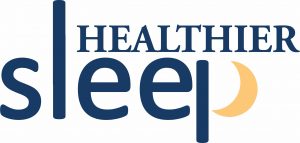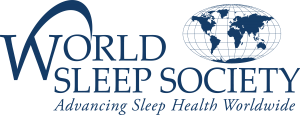Most people move a little when trying to fall asleep or change positions during the night. But sleep-related movements disorders do not involve typical shifts like tossing and turning during sleep. Instead, sleep-related movement disorders involve abnormal movements that interfere with sleep.
Sleep-related movement disorders can have a significant impact on a person’s sleep, health, and quality of life. For example, some studies show an increased risk of having a stroke. A study published in QJM, the monthly journal of the Association of Physicians, indicated that people with a sleep-related movement disorder have an increased risk of all-cause stroke with a higher chance of a hemorrhagic stroke as opposed to an ischemic stroke.
There are different forms of sleep-related movement disorders. Although they are classified as movement disorders, each has its own symptoms and risk factors. Certain sleep-related movement disorders appear to occur more often in children, while others are seen more in adults. This article will take a look at the following six sleep movement disorders:
- RESTLESS LEGS SYNDROME (RLS)
- PERIODIC LIMB MOVEMENT DISORDER (PLMD)
- SLEEP-RELATED BRUXISM
- SLEEP-RELATED LEG CRAMPS
- SLEEP-RELATED RHYTHMIC MOVEMENT DISORDER
- HYPNIC JERKS
1. RESTLESS LEGS SYNDROME
Restless legs syndrome (RLS) involves a strong urge to move the legs. It often occurs with an uncomfortable feeling in the legs that decreases with movement. The description of the uncomfortable sensation might include itching, throbbing, or electric shocks.
These symptoms:
- Typically begin after an extended period of inactivity, such as when lying down
- Are usually worse at night
- Are relieved with movement
RLS is a fairly common sleep-related movement disorder. According to the National Institute of Neurological Disorders and Stroke, in the United States, up to 7-10% of people may have RLS.
The cause of sleep-related movement disorders, such as RLS, is not entirely clear. According to Dr. Raffaele Ferri, Scientific Director of the Oasi Research Institute IRCCS in Troina, Italy, in the case of RLS, data suggests an imbalance in certain brain chemicals may contribute to the development of the disorder. “In the pathophysiology of restless legs syndrome, a dopaminergic system dysfunction and/or a brain iron metabolism change have been indicated as a possible cause,” said Dr. Ferri.
Certain factors also appear to increase a person’s risk of developing RLS and include:
Heredity: Having a family member, such as a parent or sibling, with RLS increases a person’s risk of developing the condition.
Iron deficiency: Having a deficiency in iron, even without anemia, appears to increase the risk.
Pregnancy: For some women, pregnancy triggers the development of RLS or worsens existing symptoms. Although it is not clear why, a change in hormone levels is likely the culprit.
2. PERIODIC LIMB MOVEMENT DISORDER
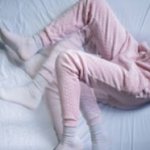
Periodic limb movement disorder (PLMD) involves repeated movement of the legs, arms, or truck during sleep. The movements may include upward flexion of the feet, twitching, or jerking movements. It can develop alone or in combination with other sleep disorders, such as narcolepsy or RLS.
Symptoms of PLMD include:
- Repeated limb movements during sleep (arms, legs, trunk, or head)
- Sleep disturbances that may cause daytime sleepiness
In order to diagnose PLMD, an adult must experience more than 15 episodes per hour as confirmed through polysomnography, whereas a child must experience more than five episodes. Additionally, other causes of limb movement, such as narcolepsy or RLS must be ruled out.
According to the Sleep Foundation, about 4-11% of people in the United States may have PLMD. Similar to RLS, the exact cause is not clear. But it appears a deficiency in dopamine may play a role.
PLMD may occur as a primary disorder or a secondary disorder, which means it likely occurs due to another medical condition. Some conditions associated with the development of PLMD include:
- Spinal cord injury
- Diabetes
- Anemia
- Medication side effects
- Another sleep disorder, such as RLS or narcolepsy
3. SLEEP-RELATED BRUXISM
Sleep-related bruxism involves clenching or grinding the teeth during sleep. Individuals that have bruxism grind their teeth involuntary and do not realize they are doing it.

Sleep bruxism appears to occur more commonly in younger people. “Sleep bruxism affects more than 10% of young adults and decreases with age,” said Dr. Ferri.
For some people, bruxism can also occur during waking hours. Although the physical action is the same, sleep-related bruxism and awake bruxism are classified as two distinct conditions.
Possible symptoms of sleep-related bruxism include:
- Jaw muscle contractions in a repetitive pattern
- Tooth grinding sounds
- Jaw muscle pain
- Temporal headaches
- Wearing down of the teeth (in severe cases)
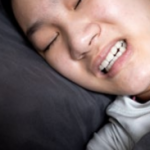
- Tooth pain
Risk factors for developing sleep-related bruxism include:
- Neurological conditions, such as Parkinson’s disease
- Medication side effects
- Sleep apnea
- Mental health issues
Dr. Ferri explains, “The most common risk factors for developing sleep-related bruxism include smoking, anxiety, high levels of stress, alcohol abuse, and obstructive sleep apnea.”
4. SLEEP-RELATED LEG CRAMPS
Sleep-related leg cramps involve painful contractions of the leg muscles or foot, which develop during sleep or when trying to fall asleep. The pain may last several minutes. Some people develop leg cramps a few times a year, and for others, it can occur every night. The pain can interfere with proper sleep.
Symptoms of sleep-related leg cramps include:
- Painful spasms or contractions of the leg or foot
- Leg cramps that occur when an individual is falling asleep or during sleep where they wake a person up from sleep
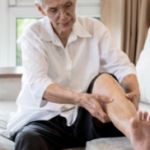 Sleep-related leg cramps are common. According to the American Academy of Sleep Medicine (AASM), about one-third of people over the age of 60 have sleep-related leg cramps every few months. The cramps are also common in pregnant women. The condition is less common in children. But still, about 7% of children have occasional sleep-related leg cramps.
Sleep-related leg cramps are common. According to the American Academy of Sleep Medicine (AASM), about one-third of people over the age of 60 have sleep-related leg cramps every few months. The cramps are also common in pregnant women. The condition is less common in children. But still, about 7% of children have occasional sleep-related leg cramps.
Why some people develop sleep-related leg cramps is not definitively known. But certain things appear to increase a person’s risk.
Risk factors for developing sleep-related leg cramps include:
- Nerve disease
- Diabetes
- Use of certain medications
- Dehydration
- Blood vessel disease
5. SLEEP-RELATED RHYTHMIC MOVEMENT DISORDERS
Sleep-related rhythmic movement disorder involves repetitive body movements while asleep or drowsy. It mostly occurs in young children. Sleep-related rhythmic movements usually occur during sleep-onset. Typically, they are most common during non-REM sleep.
Symptoms include repeated body movements, such as:
- Body rocking: This may include rocking the body while sitting up or rocking while on the hands and knees.
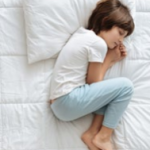
- Headbanging: This most commonly involves banging the head into the pillow while facedown.
- Head rolling: Most often, this involves moving the head back and forth while lying on the back.
- Rhythmic humming may also occur with body motions
These episodes can last 15 minutes or longer and can disrupt sleep.
Sleep-related rhythmic movement disorder is common in babies and toddlers, although the cause is not clear. According to the AASM, body rocking is the most common movement and typically starts at about six months of age.
By about nine months old, 59% of babies have one rhythmic movement. But that number decreases with age. By about 18 months old, the rate drops to 33%. By the time a child reaches five years old, only about 5% continue to have rhythmic movements related to sleep.
The disorder is less likely to occur in adults. When adult-onset sleep-related rhythmic movement disorder develops, it is associated with an injury to the central nervous system.
6. HYPNIC JERKS
Hypnic jerks are typically a normal phenomenon that occurs when someone is falling asleep. It involves a sudden, involuntary muscle movement. Hypnic jerks occur most often when someone is moving from a wakeful state to sleep. The jerks or movements may be mild or intense and may cause a momentary awakening.
Hypnic jerks affect people of all ages and do not usually interfere with the quality of sleep. According to the Sleep Foundation, up to 70% of people have at least occasional hypnic jerks.
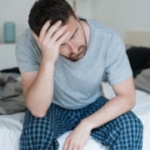
The cause of hypnic jerks is not known. One theory involves a misfire between the nerves in the part of the brain that controls the startle response. But certain factors may increase the chances of developing hypnic jerks, including:
- Poor sleep habits, such as irregular sleep
- Sleep deprivation
- High stress
- Caffeine
- Late-night exercise
- Stress
Sleep-related movement disorders can interfere with getting the rest a person needs. Poor quality sleep can affect other areas of a person’s life and lead to additional health problems.
If you or a family member has symptoms of a sleep-related movement disorder, it is best to see a sleep specialist. In some cases, polysomnography is needed to make a diagnosis. Getting a proper diagnosis is essential to developing an effective treatment plan to ease symptoms and improve sleep quality.


